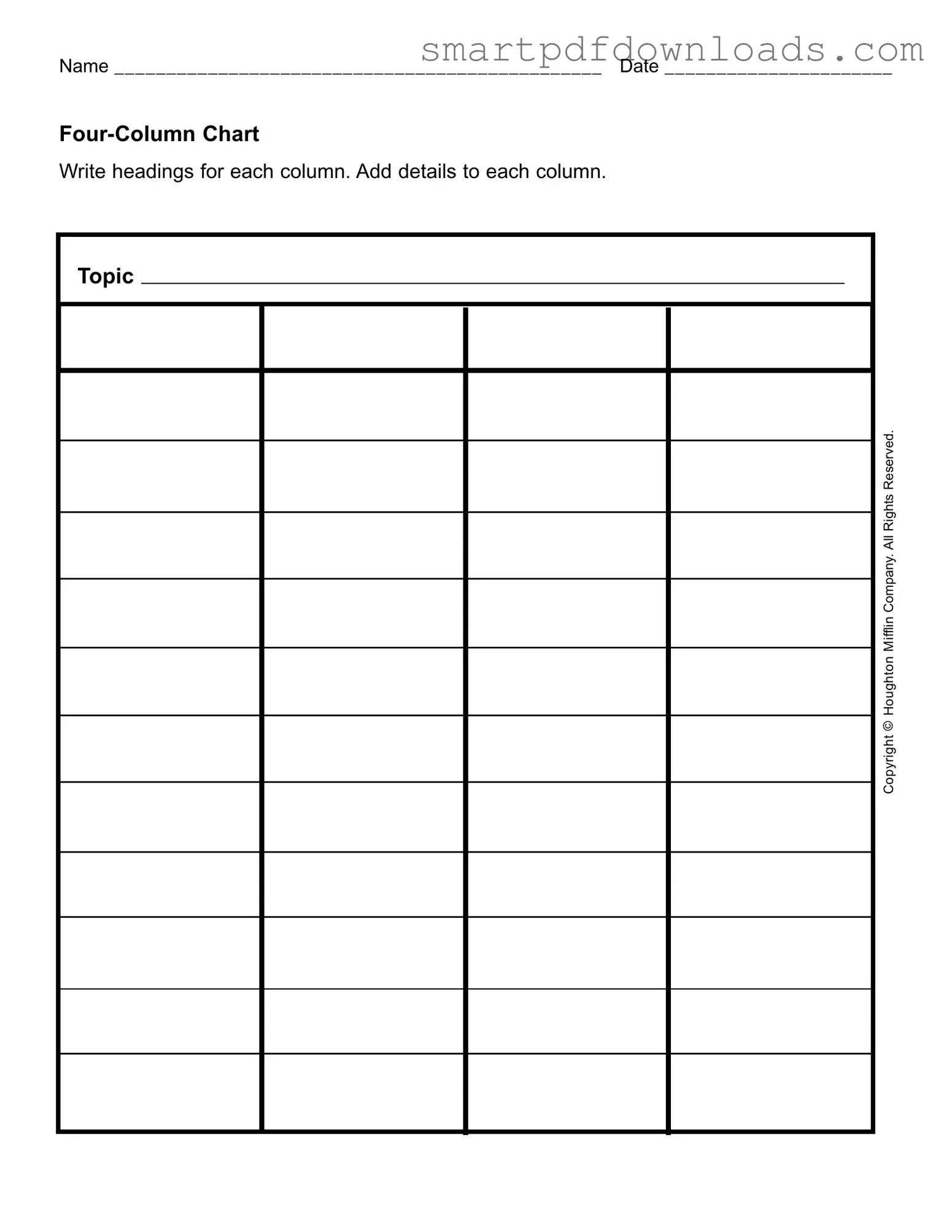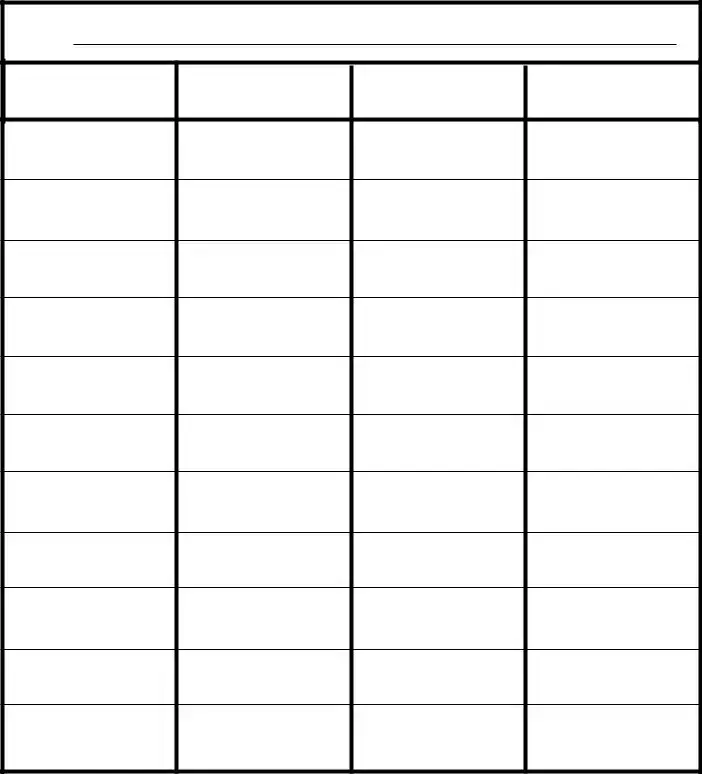Four Column Chart Form
The Four Column Chart form is a simple yet effective tool for organizing information in a structured way. By dividing data into four distinct columns, users can easily categorize and analyze key details related to a specific topic. This format not only enhances clarity but also aids in effective decision-making.
Edit Four Column Chart Online

